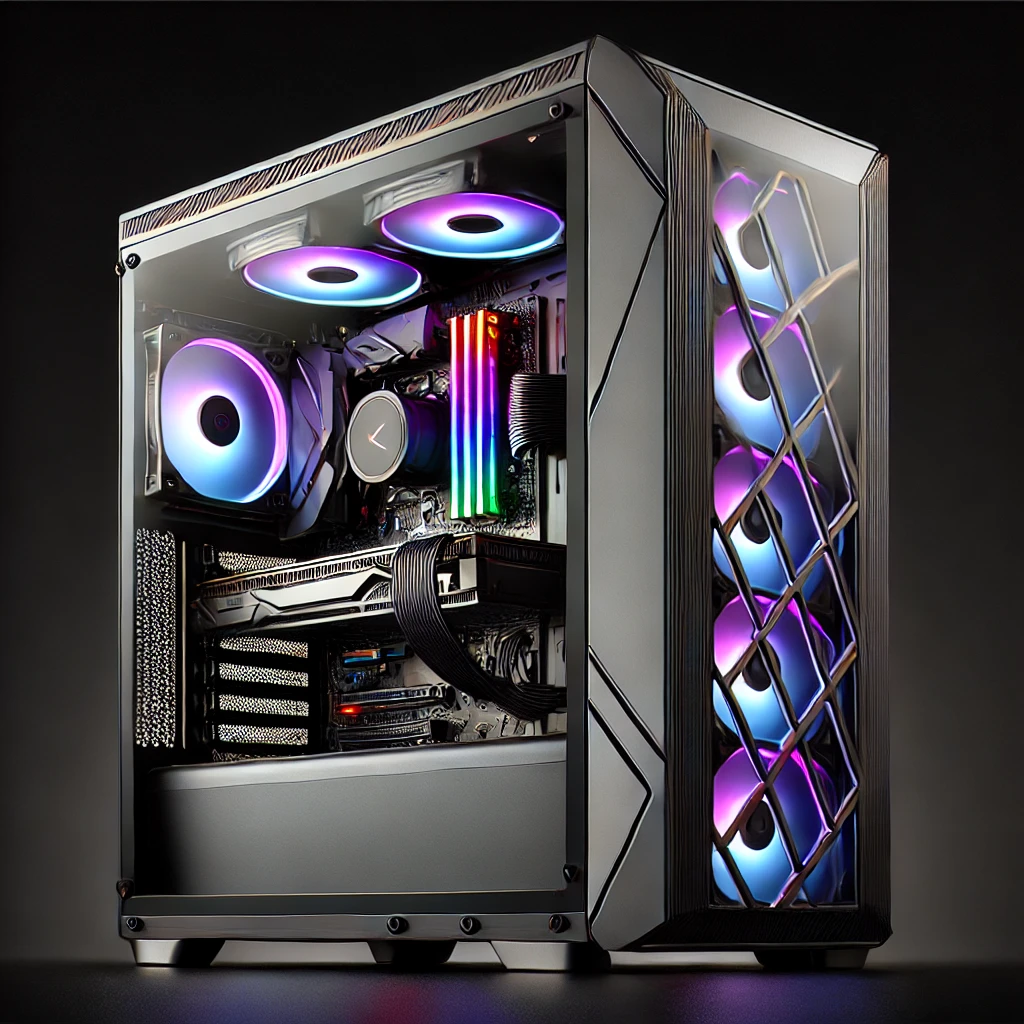Your cart is currently empty!
If you’re building a custom gaming PC, one of the first decisions you’ll need to make is choosing the right motherboard form factor. The motherboard is essentially the backbone of your system, determining the size of your case, the number of components you can install, and the cooling solutions available. Today, we’re diving into the differences between ATX and other popular motherboard form factors to help you make an informed decision.
What is ATX?
ATX (Advanced Technology eXtended) is the most common motherboard form factor used in modern desktops. Introduced by Intel in 1995, ATX motherboards are known for their versatility, providing a good balance between size, expandability, and cooling. They typically measure 305mm x 244mm and offer multiple PCIe slots, numerous SATA connectors, and support for multiple RAM sticks.

Other Motherboard Form Factors
While ATX is popular, it’s not the only game in town. Let’s explore some other common form factors and how they compare:
Micro-ATX (mATX)
Micro-ATX motherboards are a smaller variant of the ATX standard, measuring 244mm x 244mm. They usually have fewer PCIe slots and RAM slots but are still quite versatile for most gaming and everyday tasks. Micro-ATX is a great option if you’re building a more compact system without sacrificing too much functionality.
Mini-ITX
For those who want the smallest possible build without compromising too much on performance, Mini-ITX is a popular choice. These motherboards measure just 170mm x 170mm, making them ideal for compact cases. However, they usually come with limited expansion options, offering only one PCIe slot and two RAM slots. This form factor is perfect for compact builds like home theater PCs (HTPCs) or small gaming rigs.
E-ATX
E-ATX (Extended ATX) motherboards are larger than standard ATX boards, measuring around 305mm x 330mm or more. These are typically used in high-end gaming systems or workstations that require multiple GPUs and a large number of storage devices. While they offer maximum expandability and features, they also require a larger case and better cooling solutions.
Key Considerations When Choosing a Form Factor
- Case Compatibility: Make sure your chosen motherboard form factor fits in your case. ATX cases can usually accommodate Micro-ATX and Mini-ITX boards, but not always the other way around.
- Expansion Needs: Consider how many GPUs, RAM sticks, and other peripherals you’ll need. ATX and E-ATX are best for extensive setups, while Mini-ITX is ideal for minimalist builds.
- Cooling Solutions: Larger form factors allow for better airflow and more cooling options, which is crucial for high-performance gaming PCs.
Why Choose Lithgow Tech Services?
At Lithgow Tech Services, we specialize in building custom gaming PCs tailored to your specific needs. Whether you’re after a compact Mini-ITX build for portability or a robust E-ATX setup for maximum power, we’ve got you covered. Our experts can help you choose the right components to ensure optimal performance and compatibility.
For more information on our custom builds, check out our online store.
Popular Games to Enjoy on Your New Build
- Cyberpunk 2077
Developer: CD Projekt Red
System Requirements - Red Dead Redemption 2
Developer: Rockstar Games
System Requirements - The Witcher 3: Wild Hunt
Developer: CD Projekt Red
System Requirements
These games are perfect for showcasing the capabilities of a custom-built gaming PC. Whether you’re exploring the vast open world of Red Dead Redemption 2 or diving into the futuristic landscape of Cyberpunk 2077, a well-built PC can make all the difference.
Discover more from LithGeek Custom Gaming Computers
Subscribe to get the latest posts sent to your email.
Posted
in
by
Tags:


